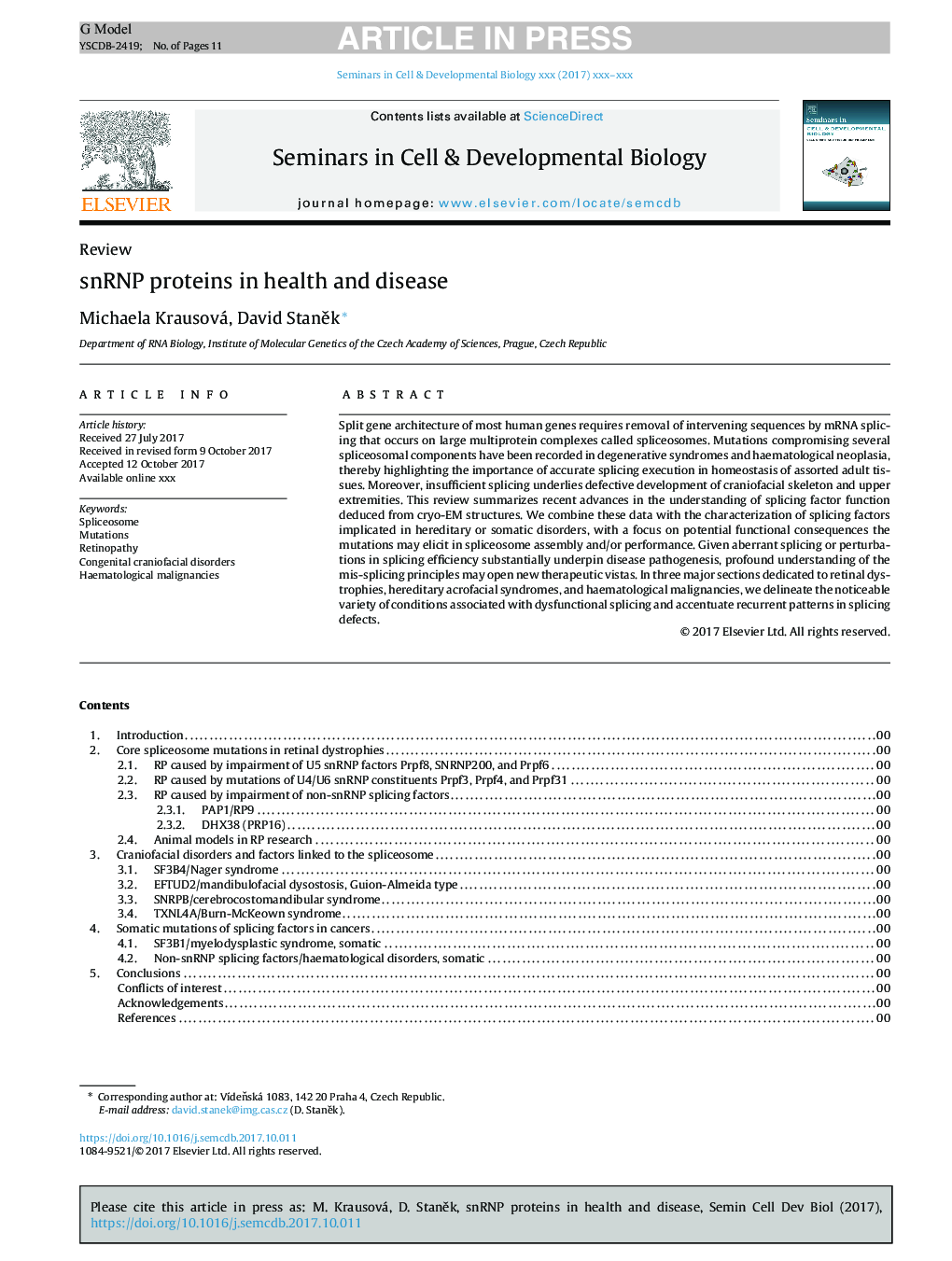| Article ID | Journal | Published Year | Pages | File Type |
|---|---|---|---|---|
| 8479611 | Seminars in Cell & Developmental Biology | 2018 | 11 Pages |
Abstract
Split gene architecture of most human genes requires removal of intervening sequences by mRNA splicing that occurs on large multiprotein complexes called spliceosomes. Mutations compromising several spliceosomal components have been recorded in degenerative syndromes and haematological neoplasia, thereby highlighting the importance of accurate splicing execution in homeostasis of assorted adult tissues. Moreover, insufficient splicing underlies defective development of craniofacial skeleton and upper extremities. This review summarizes recent advances in the understanding of splicing factor function deduced from cryo-EM structures. We combine these data with the characterization of splicing factors implicated in hereditary or somatic disorders, with a focus on potential functional consequences the mutations may elicit in spliceosome assembly and/or performance. Given aberrant splicing or perturbations in splicing efficiency substantially underpin disease pathogenesis, profound understanding of the mis-splicing principles may open new therapeutic vistas. In three major sections dedicated to retinal dystrophies, hereditary acrofacial syndromes, and haematological malignancies, we delineate the noticeable variety of conditions associated with dysfunctional splicing and accentuate recurrent patterns in splicing defects.
Related Topics
Life Sciences
Biochemistry, Genetics and Molecular Biology
Cell Biology
Authors
Michaela Krausová, David StanÄk,
